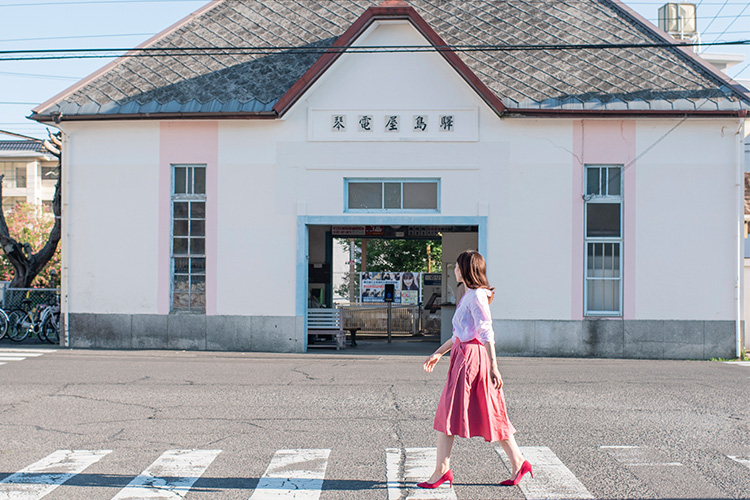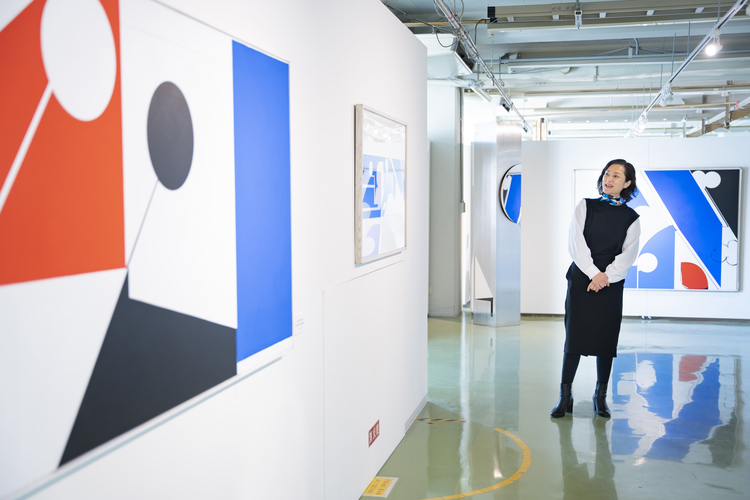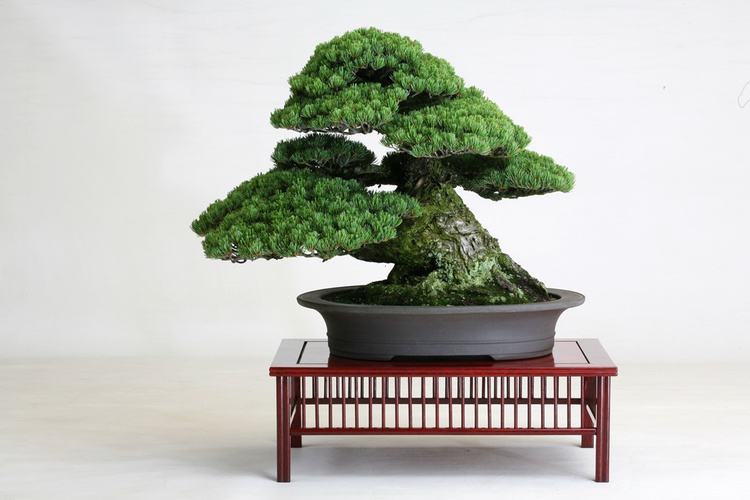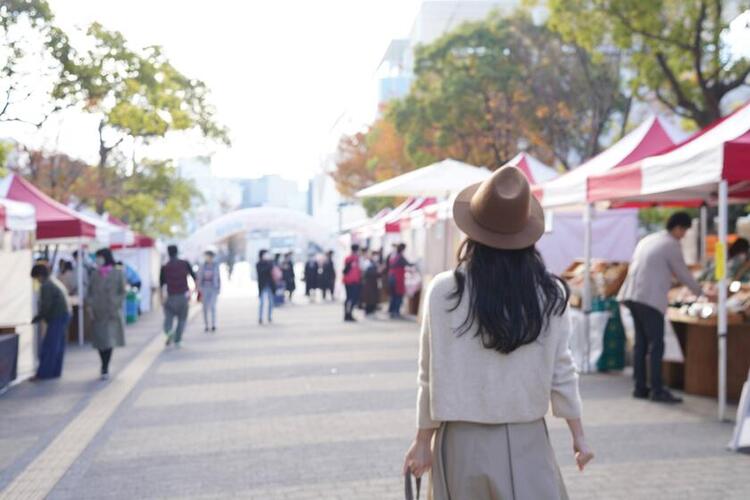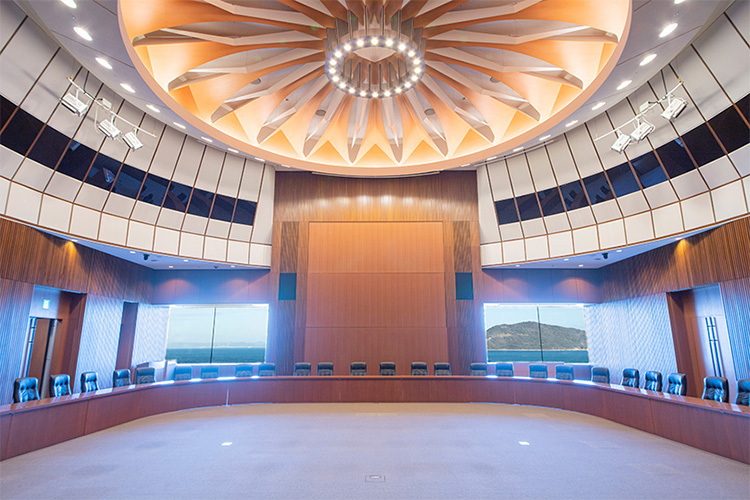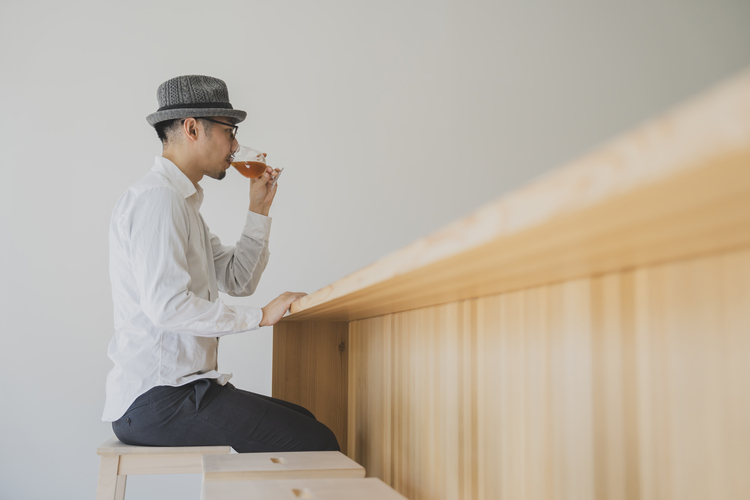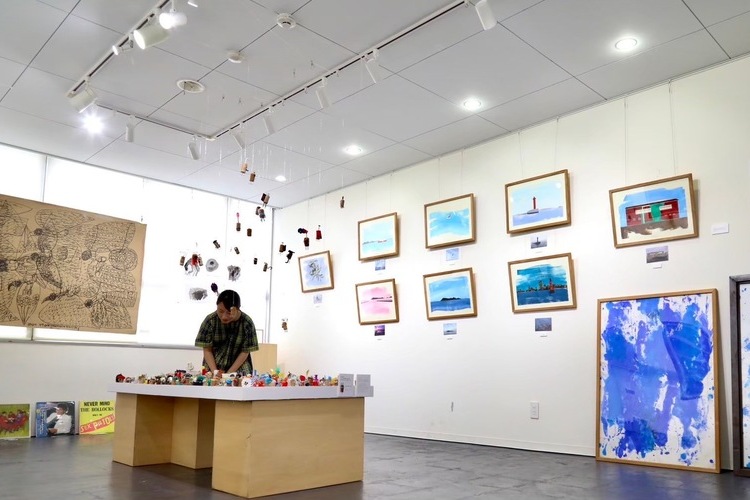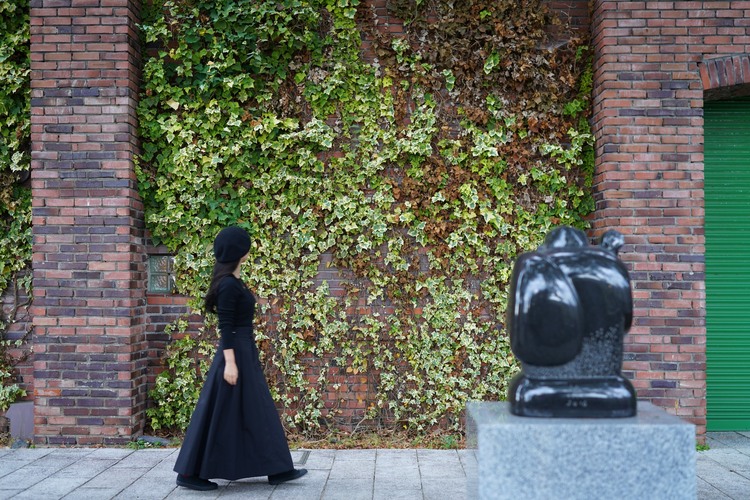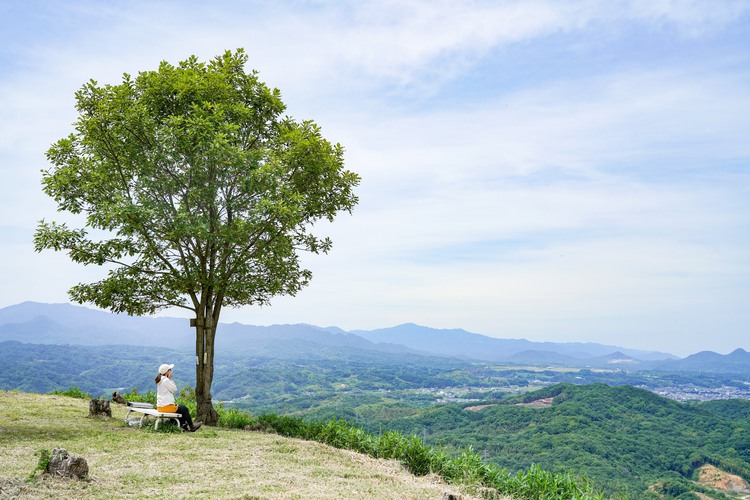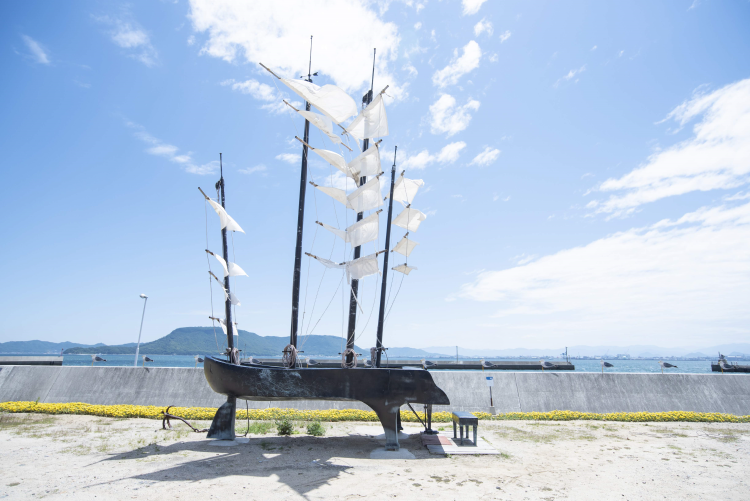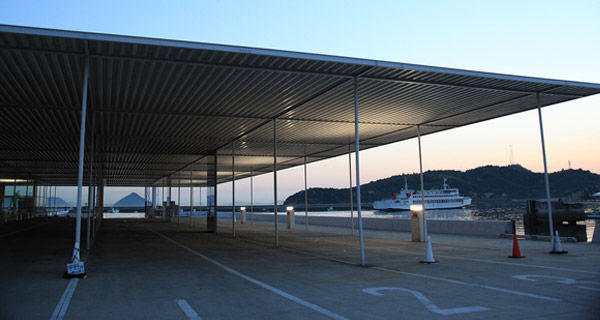Munyu-munyu (squiggly) lines stretch out like a growing plant. Their trajectory shifts in response to the shadows and lights that appear along the way.
Ishida Takashi is an artist expressing time and music as moving art, and the Takamatsu Art Museum in Kagawa Prefecture is hosting the "Ishida Takashi: Between Tableau and Window" (August 8 to October 5, 2025) exhibit.


A large-scale exhibit with approximately 80 pieces of art, ranging from early childhood to the present
This exhibit offers the chance to learn about the transformation in Ishida's art through approximately 80 pieces, including pieces from his early childhood, and early works from his teenage years and early 20s, while mainly focusing on major and new pieces.
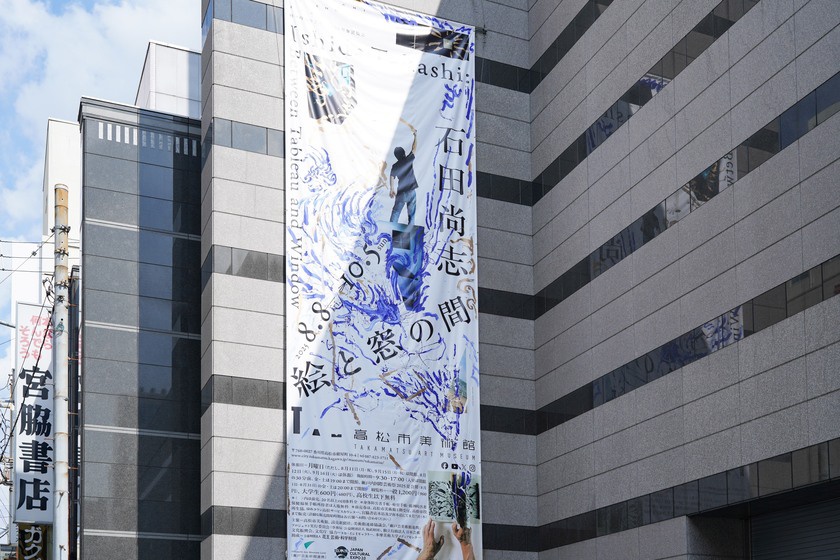
There is a special suspended banner outside the museum that was painted for the exhibition, and in the museum entrance hall, a curing sheet used during its production features an impromptu work that glows in the sunlight.


Ishida’s work was first exhibited at the Takamatsu Art Museum in 2010 in Takamatsu Contemporary Art Annual vol.1: Another Carnival. Take a walk through this exhibit, said to be inspired by new discoveries and serendipity.
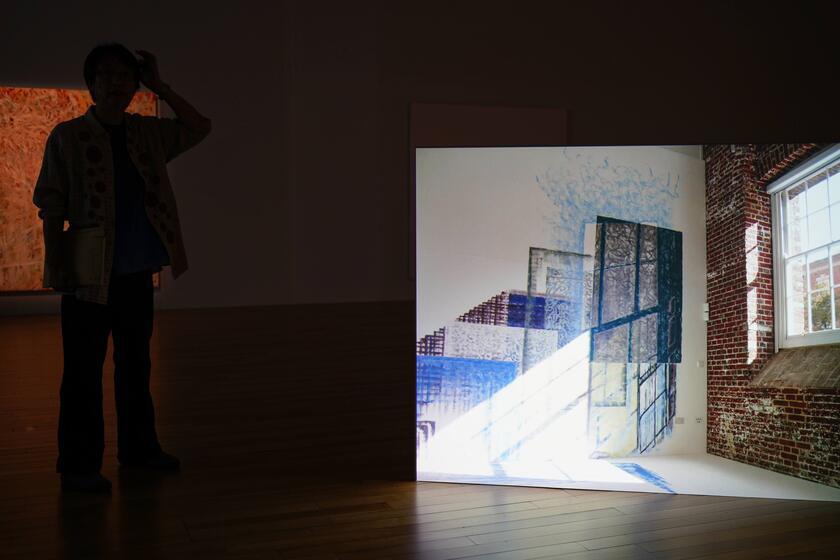
"REFLECTION"(2009)
"Between Tableau and Window"
The centerpiece of this exhibition is "Between Tableau and Window" (2018).
A dimly lit room with a single window. A line stretches across the wall, forming a swirl like a black hole, only for a white line to return it to a blank wall the next moment.
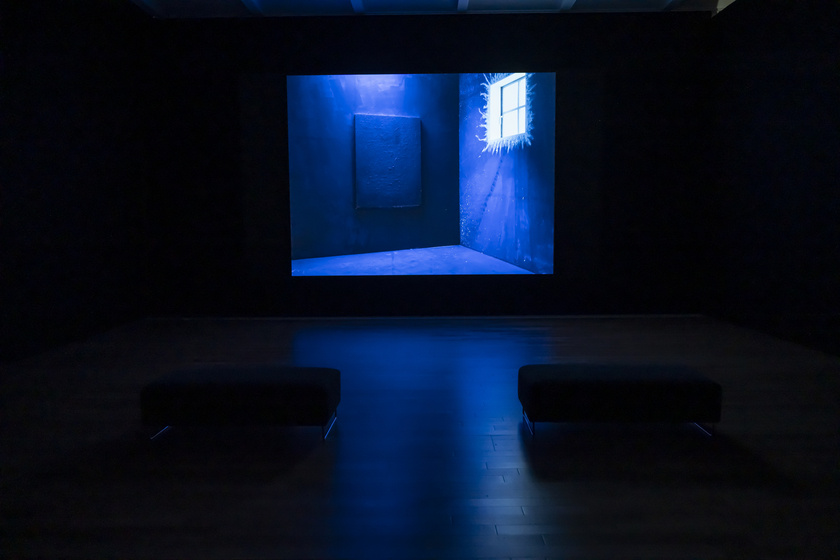

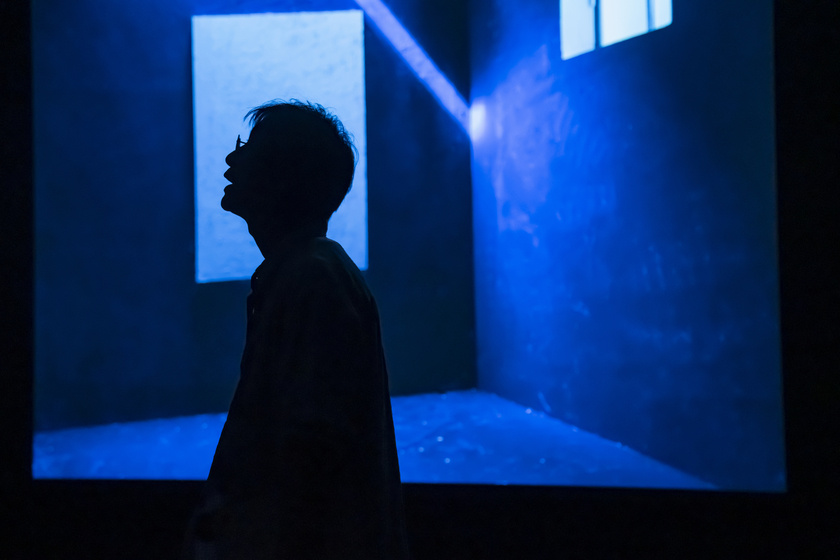
This work was produced using a technique known as drawing animation, in which short segments are drawn and then photographed frame by frame to create a stop-motion effect as the line continues. This kind of work is drawn without a storyboard, incorporating elements that appear on the spot or light shining in through the window. The viewer is drawn into the layers of time folded over one another.

The fate of painting is to stop the flow of time through the act of drawing. "Between Tableau and Window" depicts this crucial moment.
For Ishida, windows are the edge of the world, where munyu-munyu is born. Catch a glimpse of how this comes into existence.
The Tower of Babel
These oil paintings, based on a Tower of Babel motif, were painted over several years while he was in junior and senior high school.

"Waiting for the King to Come In from the 21st Floor of the Tower of Babel"
Sensing a parallel between the Tower of Babel and Tokyo during the bubble years with its continual demolition and construction, Ishida depicted "Waiting for the King to Come In from the 21st Floor of the Tower of Babel" (1988) in response to a desire to step inside the eponymous tower.

"The Tower of Babel Where the Dragon Settled"
He continued with "The Tower of Babel Where the Dragon Settled"(1989), where he realized that the world sways with windows and columns shifting with time and weather, perspectives crumbling as he steps within.

He wanted to depict time itself as it moves. The Tower of Babel series marked the starting point for the extending lines in his art.
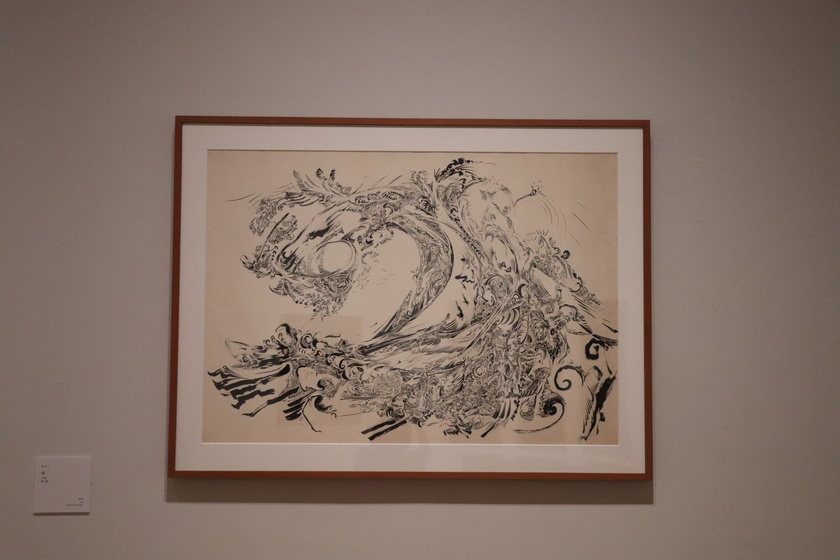
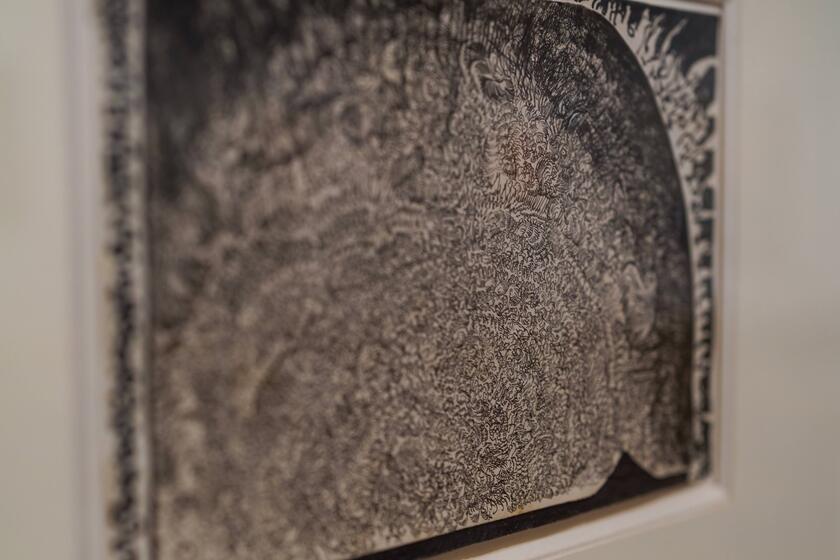
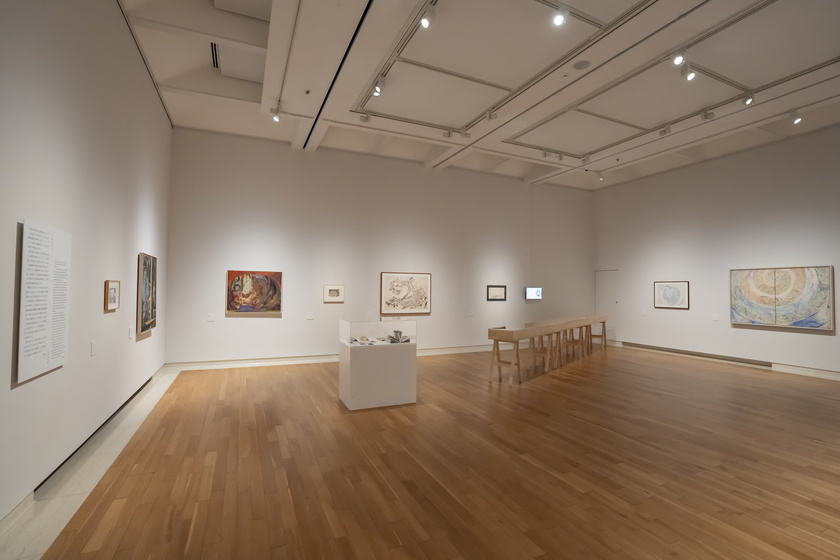
"Ema(Votive Pibture)"
Ishida, who left Tokyo on a whim in his late teens, began his artistic career while working a side job in Okinawa. He began painting "Ema(Votive Pibture)" (1990), a painting on 40 m thermal fax paper, when in Tokyo, and finished it after moving to Okinawa.
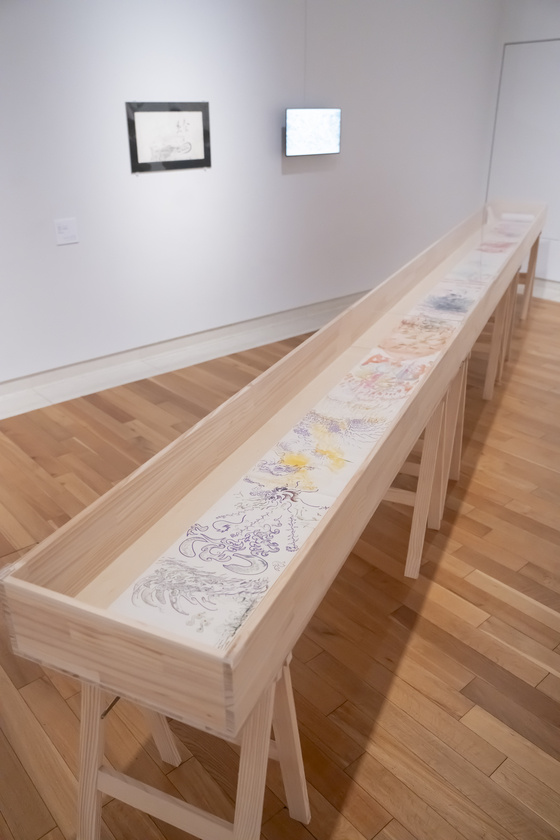
The lines, imagined as a path stretching into eternity, gradually take on color, until, at last, they break free from perspective itself, and the joy of encountering light overflows from the paper.
The title, "Ema(Votive Pibture)", was given by poet Gozo Yoshimasu from one of his own poems, and this was the starting point for Ishida’s career as an artist.


After turning 20, Ishida returned to Tokyo and once again took up painting. It was during this time that he produced "Three Rooms" (1994). Behind his desire to find windows similar to the ones he encountered in Okinawa are the elusive windows he seeks, coming in and out of view.
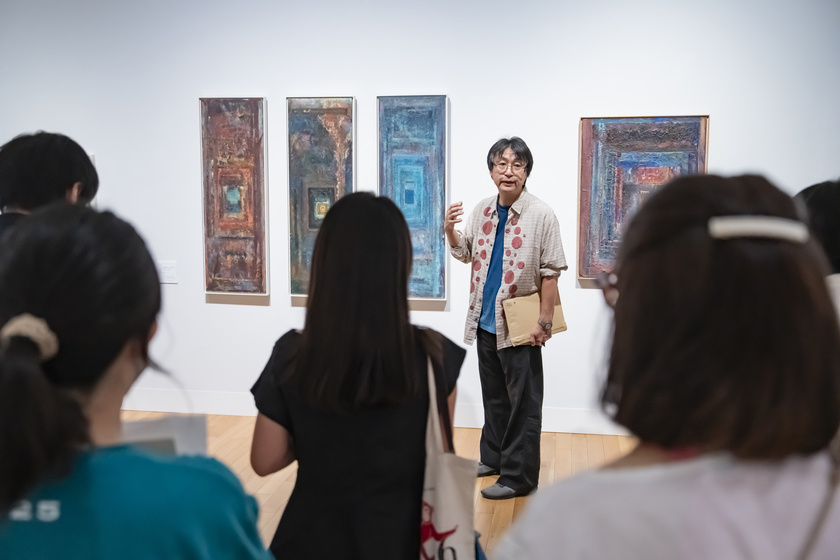
After his art from his 20s, Ishida embarked on various adventures in film and performance, after which he returned to his original experience of painting, as seen in his latest works, such as "Same-sized Window" (2023).



"Burning Chair"
In "Burning Chair" (2013), lines of water and chalk appear and disappear around a chair inside a concrete room with a window. The phantasmal scene is swayed by both real and drawn shadows.
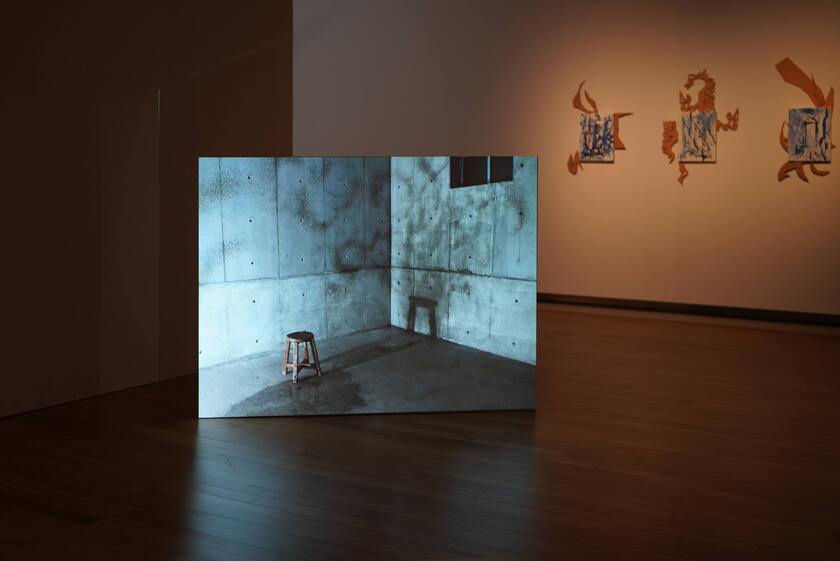
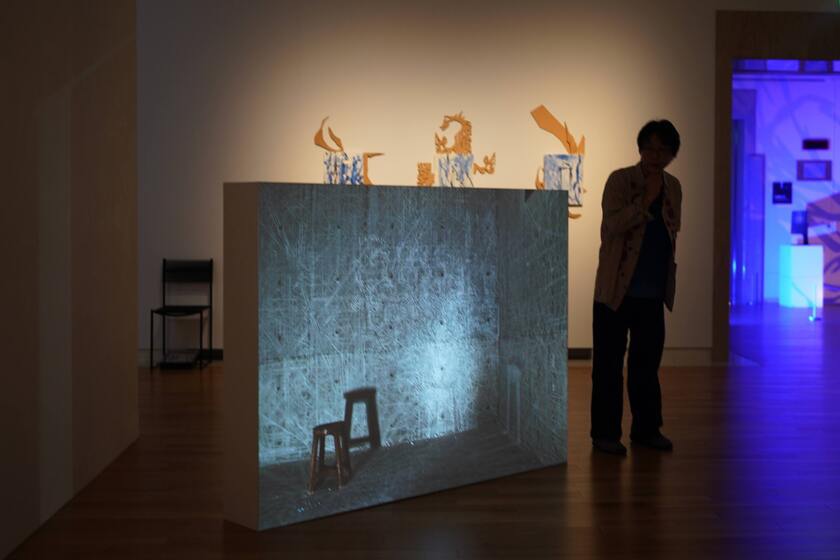
"Beyond the Garden"
One day, when Ishida was cutting MDF plywood with a jigsaw, he discovered that the surface of the wood was cut by a line, forming shapes, and casting shadows.
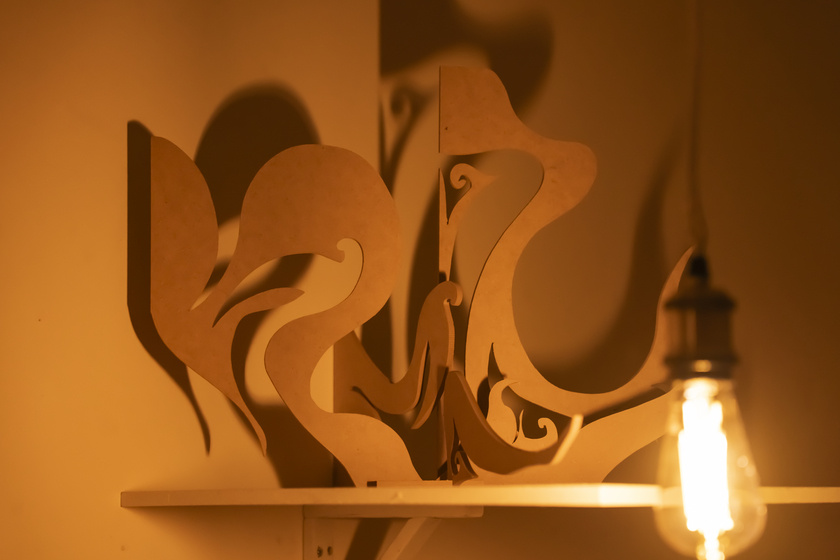
Those shapes were brought together in "Beyond the Garden" (2022).
Having seen a small tree outside his front door grow, Ishida said, “I was wondering what to make, kept drawing the lines out, and before I knew it, it became a tree.”
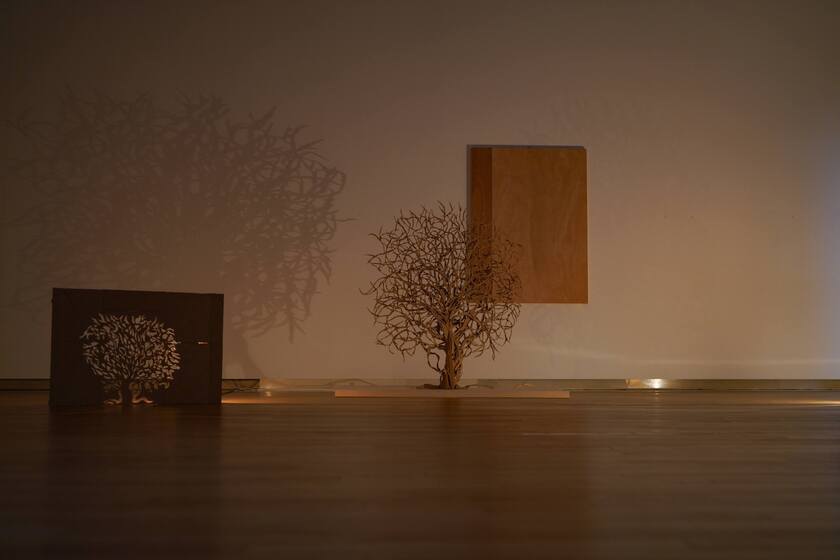
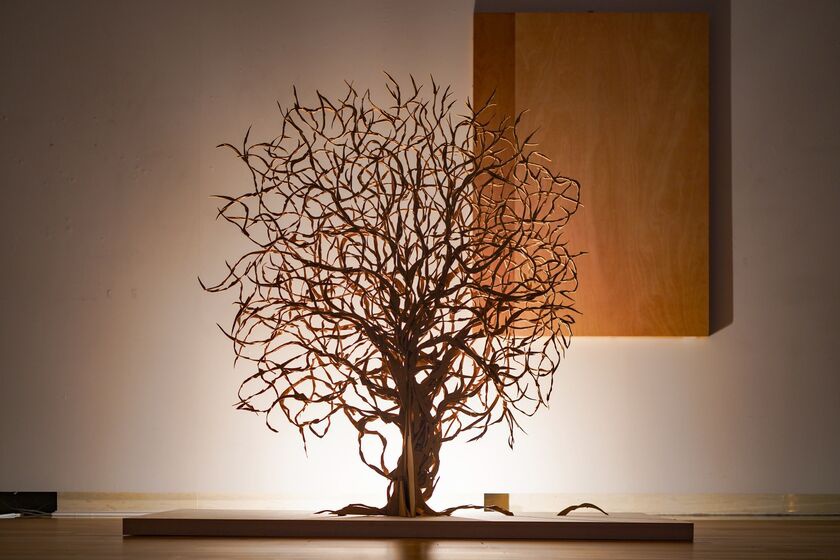
This tree, illuminated by changing sunlight, produced a feeling of nostalgia.
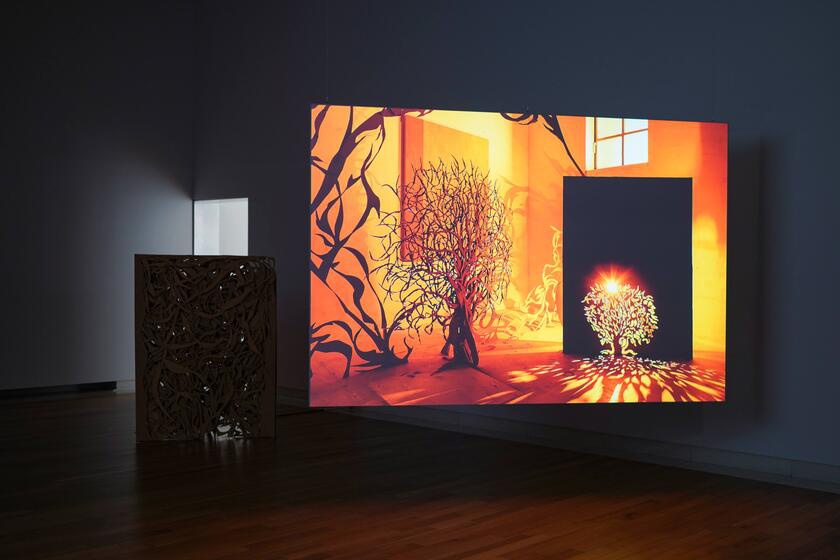

"Small Blue House"
"Small Blue House" (2022) is a house made from small parts cut up from MDF just like in "Beyond the Garden". Shadows are cast upon the ceiling, and it feels as if you've stepped into a small home.
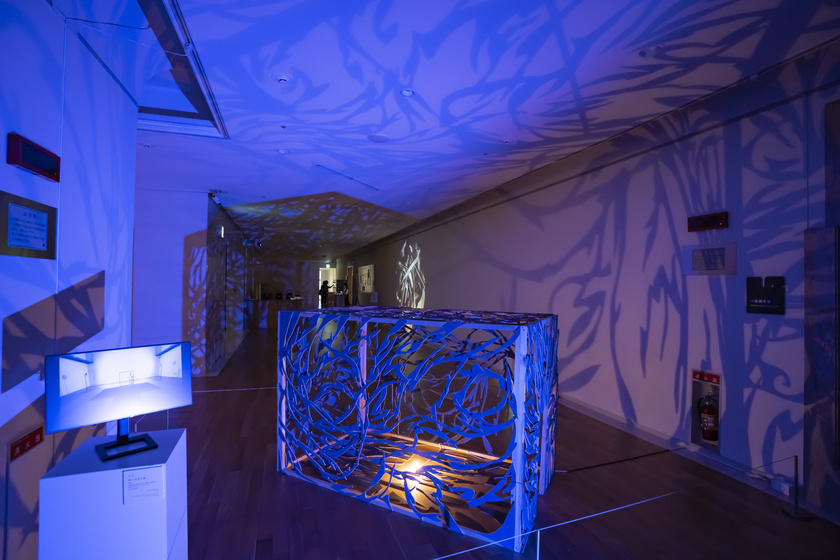
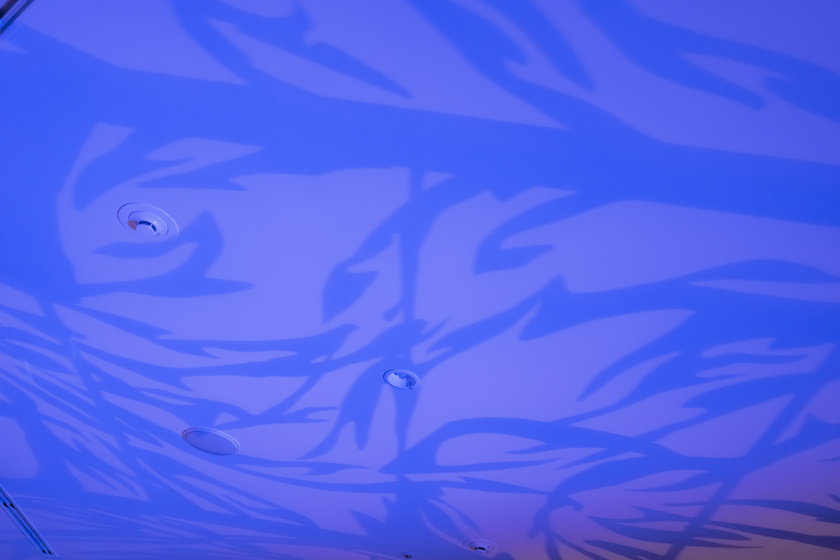
And finally, the climax of the exhibit.


"Tsansmitted Light / Emaki"
"Tsansmitted Light / Emaki" (2016) is an animated work, with colorful lines painted on scroll-like clear film.

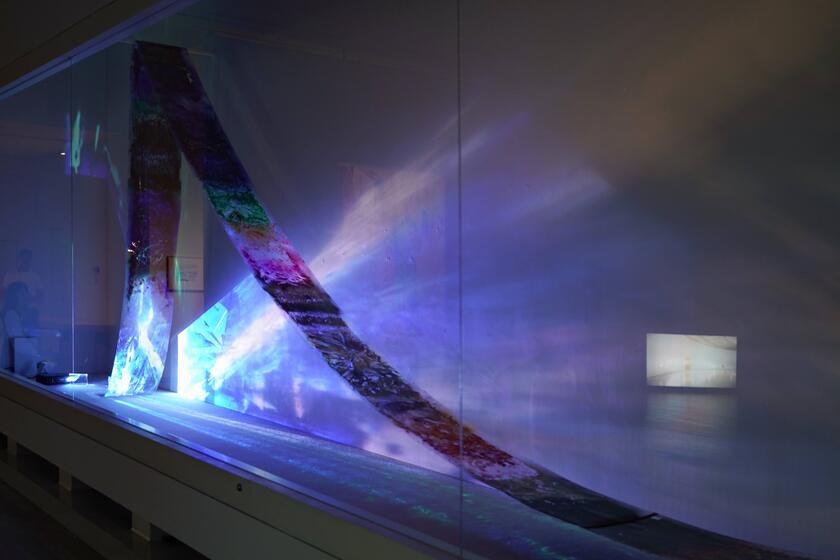
Here, light bursts forth through a glass case normally used to showcase handicrafts. Have a good look at this staging method Ishida had wanted to experiment with.


"Sea at Night"(2024)
"Light on the Arc"
In "Light on the Arc" (2019), you can see stop motion footage of the painting process and the finished painting side-by-side. Ishida was in residence at the Aomori Contemporary Art Centre (ACAC) for one month, during which time he produced art while experiencing the light, weather, and sounds of the region.

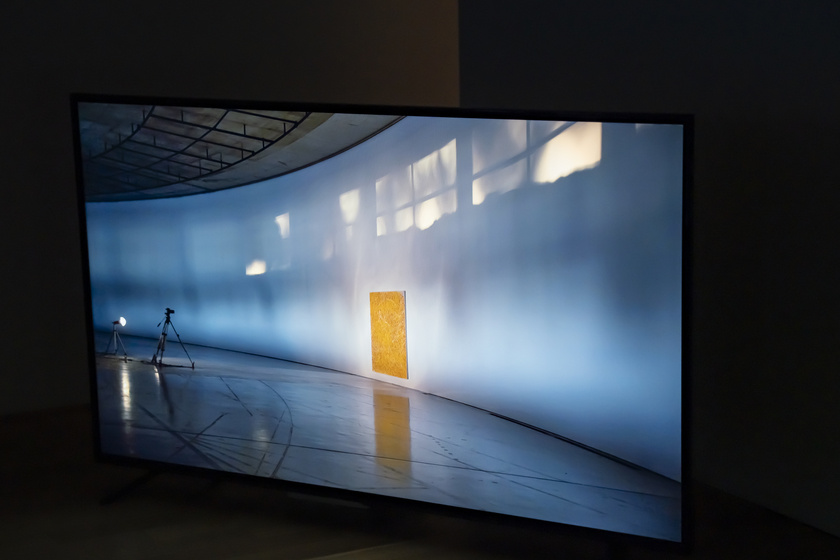
Realistic footage capturing the changing brilliance of the light in spring.
In contrast, the accompanying painting seems to finish the story and celebrate peace. Ishida stops time in this work, having pursued the art of depicting moving time up until now. But if you look closely, you will notice that accumulated time appears in the layers of paint.
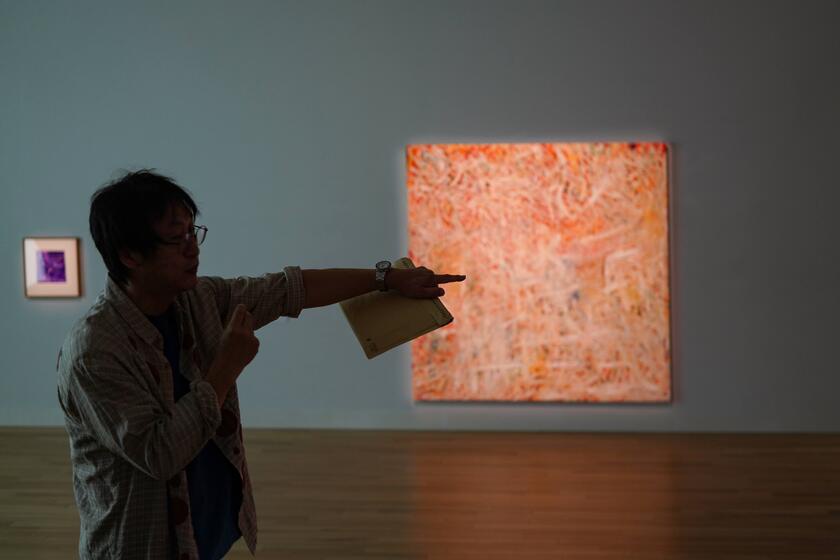
From here, these two large windows will travel to a variety of places and may come to be infused with the light and time of those places.
"Childhood Drawings"
On display toward the end of the exhibit is "Childhood Drawings" (1978), a piece Ishida drew when he was just 6 years old.
Ishida looks back on this first experience with art, when he softened crayons and dragged them along the paper to create a variety of shapes and colors with extended lines.
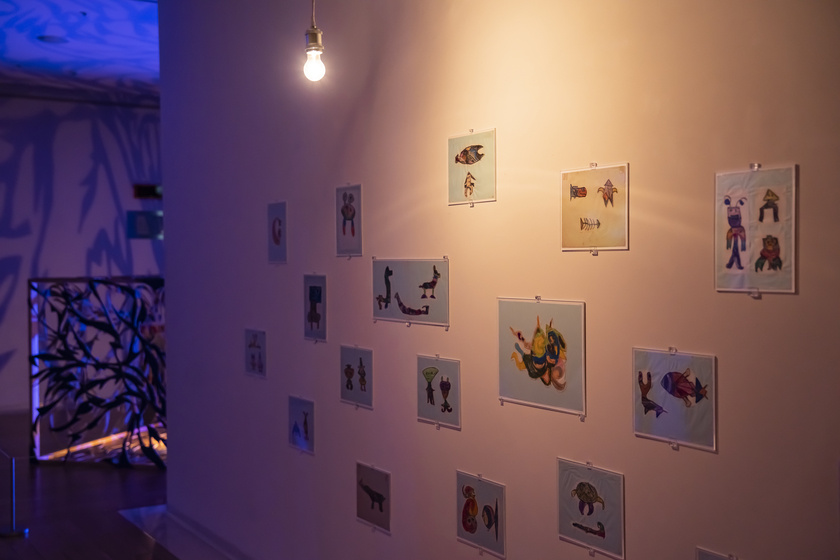
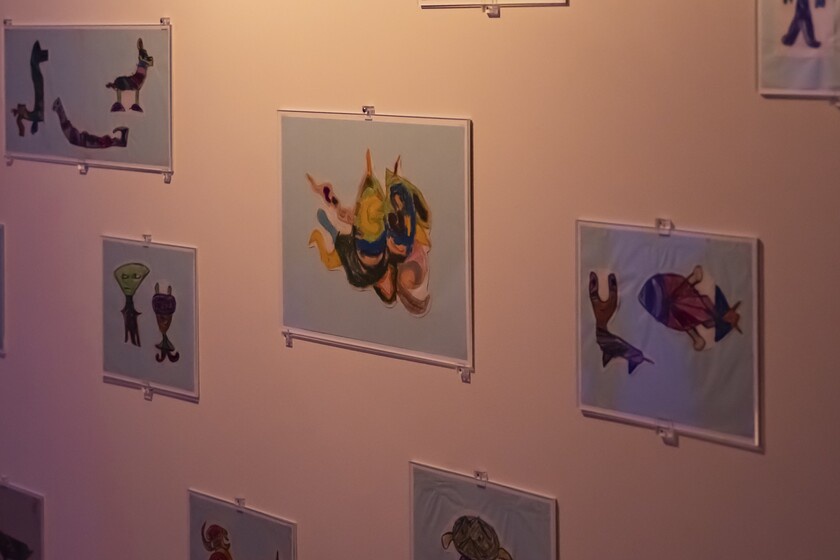
Here lies the origin of munyu-munyu.
Ishida hopes that, just like the joy he experienced while drawing as a child, children visiting the exhibition will experience something that will give birth to a new munyu-munyu.

Branch gallery"Special Exhibit: Ishida Takashi Production Documentary"
A documentary is being screened at the branch gallery located in a shopping arcade in the Marugame-cho district of Takamatsu, depicting the drawing process for the suspended banner.
(August 8 to October 5, 2025)

Takamatsu Art Museum"Ishida Takashi: Between Tableau and Window"
- Address
- 10-4 Konyamachi, Takamatsu, Kagawa
- Date and time
- Dates:August 8 to October 5, 2025
- Business hours
- 9:30-17:00 (Entry until 16:30) Friday and Saturday: 9:30-19:00 (Entry until 18:30)
- Regular holidays
- Mondays, but open on Monday, August 11 (a public holiday), and Monday, September 15, and closed on Tuesday, August 12 and September 16
- URL
- https://www.city.takamatsu.kagawa.jp/museum/takamatsu/event/exhibitions/exhibition_2025/exhibition_2025/ex_20250808.html
Gathering date:2025.9.19 / Takamatsu Art Museum"Ishida Takashi: Between Tableau and Window"








